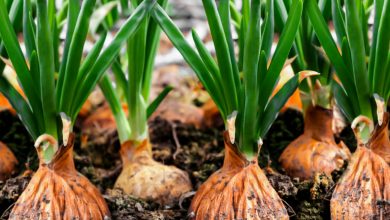Anthracnose: [Identify, Treat and Prevent this Fungus]
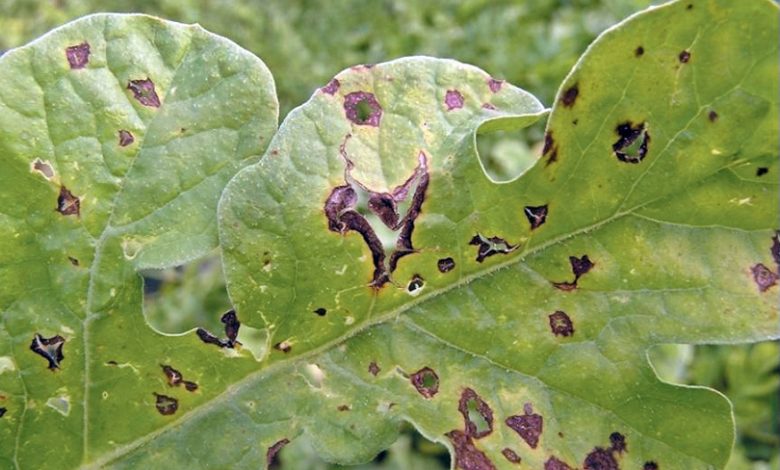
What is anthracnose?
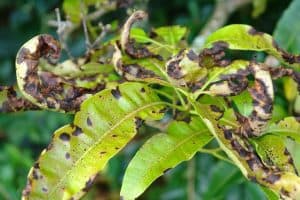 Anthracnose, known as “soapy olive” and “spotted” is one of the most common and dangerous diseases that attacks plants and occurs in hot, humid climates.
Anthracnose, known as “soapy olive” and “spotted” is one of the most common and dangerous diseases that attacks plants and occurs in hot, humid climates.
This disease is caused by various types of fungi and affects fruit trees, forest trees, grasses, vegetables and greens alike.
The fungi are Discula, Septoria, Venturia, Phyllosticta, Marssonina, and Colltotrichum.
Although it can be deadly for certain types of plants, it is harmless to humans because it does not cause any negative effects on the skin, only some dripping spots that soon disappear.
However, its attack on plants can be devastating because it produces a considerable loss in the yield and quality of crops, by reducing the useful life of the plants, thus limiting their production and marketing.
The consequence of this is great economic losses for farmers in the field.
[socialpoll id=”2653131″]
What causes anthracnose?
 Anthracnose produces bumps on the trunks and irregular spots of various colors depending on the part of the plant affected.
Anthracnose produces bumps on the trunks and irregular spots of various colors depending on the part of the plant affected.
Thus, we have that in the leaves it manifests itself in the form of spots that produce holes, which deform the plant, also causing an aesthetic problem.
In the case of the fruits, they turn gray.
Other colors are black, reddish, tan or orange, it all depends on whether the fungus affects the leaves, fruits or stems.
It is a disease that has the characteristic of spreading rapidly, so we must attack it in time if we want the crops to survive.
How can we identify anthracnose?
- On leaves, anthracnose usually first appears as small irregular yellow or brown spots. These spots darken with age and can also spread, covering the leaves.
- In vegetables, it can affect any part of the plant.
- On the fruits, it produces small dark sunken spots, which can spread. In wet weather, pink spore masses form in the center of these spots. Eventually, the fruits rot.
- In trees, it can kill the tips of young branches. It also attacks young leaves, which develop brown spots and patches. It can also cause tree defoliation.
 Anthracnose is not difficult to identify, but it is necessary to carefully monitor the entire planting process.
Anthracnose is not difficult to identify, but it is necessary to carefully monitor the entire planting process.
As it is a more common disease in rainy periods, with high humidity and mild temperatures, we must be extremely vigilant when these climatic conditions exist that make the attack of the fungus more expeditious.
It is good to keep in mind that, although the fungus infects weak branches, in Spain the symptoms are detected at maturity.
So, the monitoring period should cover the entire sowing process, and reproduction throughout the year.
Small circular spots that appear on the leaves
We identify the disease at first by the small circular spots that appear on the leaves, which become darker as the days go by, in a process known as necrosis.
If the plant is weak due to a poor nutritional process, or has wounds caused by insects, it is more prone to attack by anthracnose.
What crops does it affect?
 Anthracnose is also known as olive tree disease because it attacks, above all, this type of crop, that is, it is the enemy of olive growing.
Anthracnose is also known as olive tree disease because it attacks, above all, this type of crop, that is, it is the enemy of olive growing.
From this attack comes the nickname «soapy olive» because it produces necrotic spots on the olive until it dehydrates and rots.
The effect of the disease is an incredible detriment to the quality of olive oil, which, as we all know, is a product of vital importance in European cuisine, especially Spanish.
It also affects citrus fruits, such as oranges and tangerines, by producing circular brown spots, which causes defoliation of the produce.
Other crops that are victims of the fungus are tomatoes and peppers, where it makes no distinctions because it attacks the green ones as well as the ripe ones.
It especially affects the appearance of the product by causing dark spots that evolve until the rotting of the fruit and the death of the branches and leaves.
Other plants that it also affects are plum trees, cherry trees, peach trees, beans, willows, bananas, onions, potatoes, garlic, strawberries, cucumbers and melons.
How can we combat anthracnose?
 Not everything is bad. There are good news.
Not everything is bad. There are good news.
Even when a tree is severely infected with anthracnose, it will not kill it.
But keep in mind that it weakens it and makes it more susceptible to other diseases, frost injury, environmental stresses like drought and extreme temperatures, and insect damage. For these reasons, it is important to control the disease early.
Keep a close eye on your crops.
As anthracnose progresses and lesions become those tiny bullet holes, they are easily mistaken for insect damage and possibly treated inadequately.
Rake and destroy fallen leaves that are infected with Anthracnose
Good hygiene is, as always, your first line of defense. During the fall, it safely rakes and destroys all fallen leaves from infected trees and roses.
This way the anthracnose spores will not have a place to overwinter. Remove all infected twigs and cankers and disinfect any tools with a 10% bleach solution between cuts to prevent the fungus from spreading to the same tree or to other trees.
Sanitize the tools
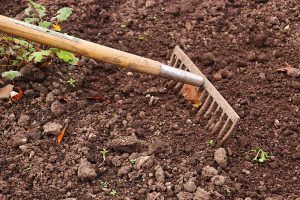 Disinfection of tools is especially important. Safely dispose of any infected plant parts by burning or throwing them in the trash.
Disinfection of tools is especially important. Safely dispose of any infected plant parts by burning or throwing them in the trash.
Chlorothalonil and copper fungicides can be used as prevention. In the case of trees, they are only recommended when the infection is severe and is repeated every year, leading to the death of many branches.
The fungicide should be applied to the tree at budding in early spring and repeated weekly or fortnightly until average daily temperatures consistently exceed 25 degrees Celsius.
Leave space between your plants or trees
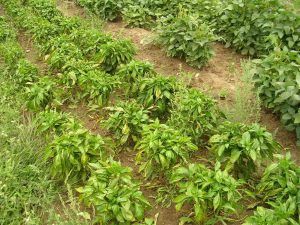 Like all fungi, anthracnose thrives in moist conditions. Although you cannot change the climate, you can ensure good air circulation by leaving ample space between your rose plants, as well as through regular and proper pruning.
Like all fungi, anthracnose thrives in moist conditions. Although you cannot change the climate, you can ensure good air circulation by leaving ample space between your rose plants, as well as through regular and proper pruning.
Both ways help foliage dry faster from dew and rain. Also, when watering, water only the roots and avoid wetting the foliage to decrease the chance of the fungus spreading.
The fight against anthracnose must be carried out in several stages, from the study of the soil to the total monitoring of the campaign.
First of all, we must disinfect the soil before sowing, improving drainage to avoid waterlogging when we irrigate.
It is important to pull out the weeds to avoid the accumulation of water and the spread of the fungus.
As we already know what is the right climate for this disease, since the wind and rain spread it, we must space the plantation frames, maintaining the adequate separation between the plants, and eliminate wild herbs.
Once the process has been completed, it is important to maintain the plants, taking preventive measures of a chemical nature, but also cultural measures.
Prune the plants to sanitize them and prevent the spread of the fungus
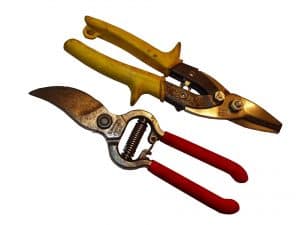 Among these measures, sanitation pruning to remove affected leaves and branches and detect, collect and destroy diseased fruits and not to wet the leaves, stems and flowers.
Among these measures, sanitation pruning to remove affected leaves and branches and detect, collect and destroy diseased fruits and not to wet the leaves, stems and flowers.
Once this second stage has been completed, the remains of plants affected by the disease must be removed, since the fungus remains active for two years and a new affectation may occur.
As we have previously mentioned, the tools used in maintenance, before and after, must be subjected to a cleaning process, with alcohol and disinfectants, so as not to contaminate other plants when we use them again.
What products should we use?
Specialists recommend adequate fertilization to keep the crop resistant, applying fungicides both preventively and curatively.
Although the treatment varies depending on the type of fungus that is affecting the plant, horsetail extract is recommended as a preventive measure.
There are countless products to attack this fungus, such as:
- Deccopry Pot, a fungicide against post-harvest diseases.
- Copper oxychloride.
- Philabuster, ideal for rot control in citrus and pome fruit.
- Cabrio WG, fungicide for table olive, pear and persimmon for fungal control.
- Signum, fungicide to combat fungi in vegetables.
- Caramba EC, fungicide for the prevention of barley and wheat diseases.
- Ticuproxy MC, organic-cupric fungicide.
- Folpan 80 WG, broad spectrum, has preventive activity.
- Astoum, for rot control.
- Poltix, protects against mottle and anthracnose.
- Xoque, bactericide with a broad spectrum of action.
Bordeaux broth is also recommended, which is a mixture of copper sulfate, water and lime.
Alquera Copper Sulfate 25kg €169.00 View on Amazon Prices with VAT without transport
 Multipurpose fungicide with preventive and… €16.50 View on Amazon Prices with VAT without transport
Multipurpose fungicide with preventive and… €16.50 View on Amazon Prices with VAT without transport SUPERCOOPER®. Bio Protector-… View on Amazon Prices with VAT without transport
Last updated on 08-01-2022 / Affiliate Links / Affiliate API Images
Discount!  CULIVERS Copper Oxychloride 1 l concentrate… €28.25 €27.02 View on Amazon Prices with VAT without transport
CULIVERS Copper Oxychloride 1 l concentrate… €28.25 €27.02 View on Amazon Prices with VAT without transport MGI DEVELOPPEMENT – 1 kg of copper sulfate,… €17.62 View on Amazon Prices with VAT without transport
Flower-Fungicide liquid copper Cupper Top 50 cc View on Amazon Prices with VAT without transport
Last updated on 08-01-2022 / Affiliate Links / Affiliate API Images

![Photo of Erica Australis: [Care, Planting, Irrigation, Substrate and Pests]](https://www.complete-gardening.com/wp-content/uploads/2022/08/erica-australis-care-planting-irrigation-substrate-and-pests-390x220.png)
![Photo of List of [16] Indoor Plants that Bloom All Year](https://www.complete-gardening.com/wp-content/uploads/2021/06/kalanchoe_1583756127-390x220.jpg)

